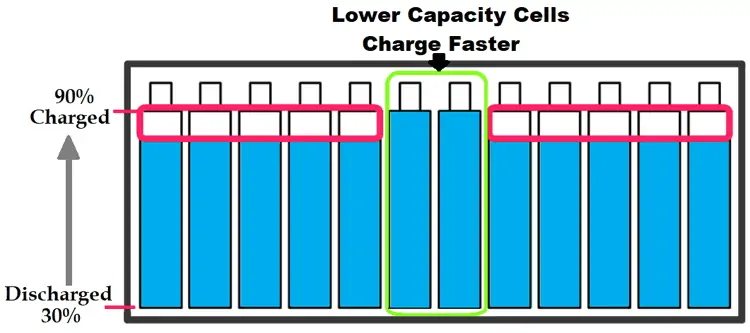 |
Welcome To Evlithium Best Store For Lithium Iron Phosphate (LiFePO4) Battery |
 |

In the world of LiFePO4 batteries, achieving optimal performance is not just about choosing the right cells but also ensuring a delicate balance among them. The process of LiFePO4 battery balancing plays a crucial role in enhancing the overall efficiency and lifespan of the battery pack.
Why LiFePO4 Battery Balancing Matters: LiFePO4 battery balancing involves aligning the voltage and charge levels of each individual cell within a battery pack. Despite our best efforts, variations in charge amounts and external factors during transportation can lead to discrepancies between cells. To harness the full potential of these cells and promote seamless collaboration, LiFePO4 battery balancing becomes essential.
Understanding the Impact: Consider this scenario: a battery pack with cells of varying capacities. A smaller-capacity cell charges faster, potentially limiting the charging potential of larger-capacity cells within the same pack. Similarly, during discharging, the weaker cell can discharge faster, constraining the overall discharge capacity of the battery pack. This imbalance, often referred to as the "barrel effect," dictates the performance limitations of the entire battery pack, posing safety risks like overcharging and over-discharging.
The LiFePO4 Battery Balancing Process: To address this, LiFePO4 battery balancing is crucial. Traditionally, two methods were employed—top battery cell balancing and bottom battery cell balancing. However, modern technology offers a more sophisticated solution: balancers. These devices outperform manual balancing in terms of accuracy and efficiency. When manual balancing is necessary, it involves using a multimeter to measure and record cell voltages, arranging cells, connecting them in parallel, and patiently waiting for the voltage balance.
Choosing Between Top and Bottom Balancing:
The choice between top and bottom balancing depends on the battery pack's usage. Top balancing involves charging cells to full before connecting them, ideal for optimizing charging. On the other hand, bottom balancing requires discharging cells to the minimum safe level before connecting them, suitable for optimizing discharge. The common denominator is achieving balance, regardless of the chosen method.
The Role of BMS:
To maintain cell balance and prevent issues like overcharging and over-discharging, adding an excellent Battery Management System (BMS) is crucial. BMS not only monitors parameters but also contributes to maintaining cell balance. While manual balancing is feasible, incorporating a balancer into your setup can streamline the process and make it a hassle-free routine.
Conclusion:
LiFePO4 battery balancing might seem like a technical aspect often overlooked, but its impact on the overall performance and longevity of a battery pack cannot be overstated. For DIY LiFePO4 enthusiasts, incorporating proper balancing techniques is a key step towards unlocking the full potential of their battery packs. In the pursuit of a reliable and efficient power source, LiFePO4 battery balancing proves to be an indispensable practice for maximizing performance and ensuring longevity.
Edit by editor
All Rights reserved © 2025 Evlithium Limited